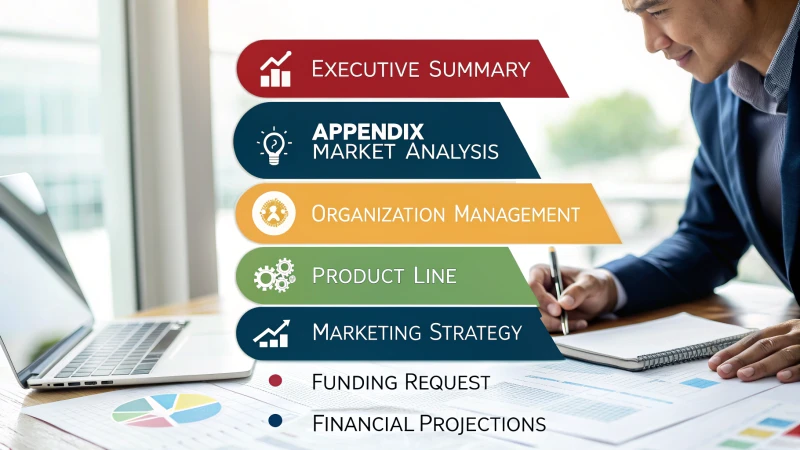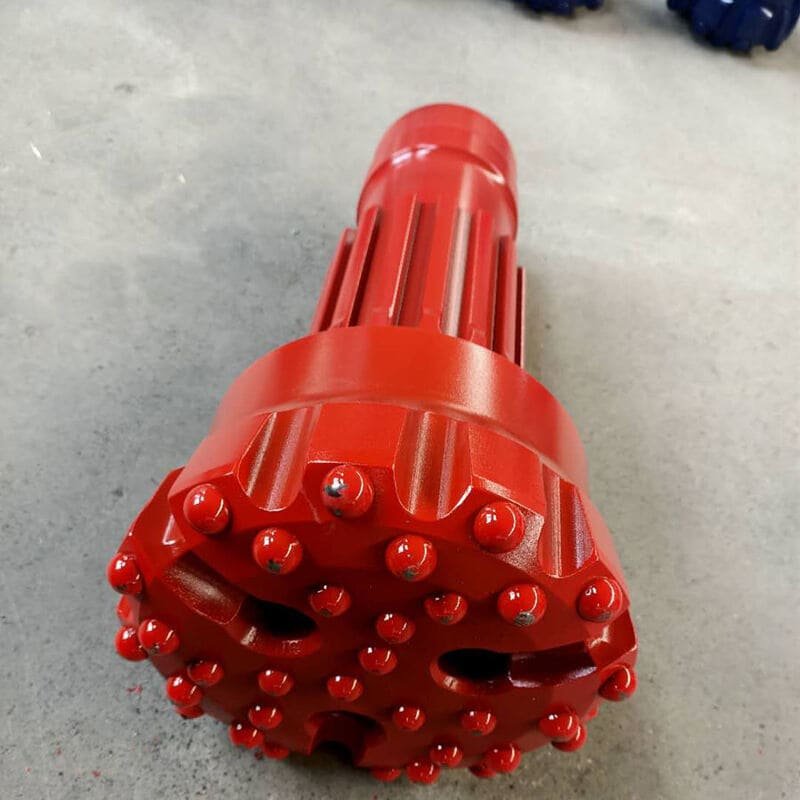Have you ever dreamt of diving into the world of DTH bits import business? It’s a venture filled with potential, especially if you’re strategic and thorough.
To kick off a successful DTH bits import business, start with deep market research to spot demand and size up your competitors. Craft a solid business plan, ensure legal readiness, partner with trusted suppliers, and fine-tune your logistics and storage strategies.
I remember when I first toyed with the idea of diving into the DTH bits import world. It felt like a daunting task, but also thrilling because of the opportunities it promised. The first thing I did was immerse myself in market research. I needed to know where these bits were in demand—mostly in mining and construction. Getting to know the competition was like peeking over my neighbor's fence; I learned what they offered and how I could stand out.
With that knowledge in hand, building a business plan was my next step. It's like laying the groundwork for your house—you need to be solid on finances, legal aspects, and supply chain logistics. Speaking of which, finding reliable suppliers was a journey in itself. I focused on quality and reliability since the last thing you want is to promise the moon and deliver a rock.
But let’s not forget about logistics. Shipping, warehousing—it all needs to be in sync, like a well-rehearsed orchestra. It’s more than just moving products from point A to B; it’s about ensuring they arrive safely and on time. As I journeyed further into this venture, I learned that impeccable customer service could set me apart. Offering support, guidance, and a touch of personal care could make all the difference.
Market research is crucial for DTH bits import success.True
Identifying demand and analyzing competitors helps tailor strategies.
Legal compliance is optional in the DTH bits business.False
Ensuring legal compliance is essential to avoid penalties and issues.
How can I conduct effective market research for DTH bits?
Diving into market research for DTH bits can feel like exploring a new world, full of potential and challenges. It’s about understanding what the industry needs, outsmarting the competition, and truly getting to know your customers.
To conduct effective market research for DTH bits, focus on analyzing industry demand, evaluating competitors, and identifying customer needs. Surveys, interviews, and data analysis are key to uncovering market trends and opportunities.

I remember when I first considered venturing into the DTH bits market. It felt like standing at the edge of a vast mine, staring down at all the possibilities beneath the surface. The first step? Understanding industry demand.
Understanding Industry Demand
Think of it as digging into the heart of industries that live and breathe DTH bits—mining, construction, oil and gas drilling. Each sector has its unique quirks and demands. Tailoring my market research approach1 to these specific needs was like finding the right drill for the job; it made all the difference.
Competitor Analysis
Competitors aren’t just rivals; they’re also teachers. By analyzing their product offerings, pricing strategies, and market share, I learned where they excelled and where they fumbled. Tools like SWOT analysis helped me chart their strengths and weaknesses—a bit like drawing up a game plan before a big match.
Creating a competitor profile table can help visualize key differences:
| Competitor | Products Offered | Pricing Strategy | Market Share | Key Strengths |
|---|---|---|---|---|
| Comp A | DTH Bits | Premium | 25% | High Quality |
| Comp B | DTH Hammers | Budget | 15% | Cost-Effective |
Identifying Customer Needs
Knowing who your customers are and what they need is crucial. From mining companies to construction firms, understanding their challenges helps tailor solutions that truly resonate. Conducting surveys or interviews felt like having a coffee chat with a friend, getting real feedback straight from the source.
Data Collection Methods
Collecting data effectively is key. I found that:
- Surveys: Online or in-person questionnaires gave me valuable numbers to crunch.
- Interviews: These provided deep insights into customer experiences and expectations.
- Secondary Research: Industry reports and publications offered a treasure trove of existing data.
Analyzing Market Trends
Keeping pace with the latest technological advancements in DTH drilling was like staying ahead in a race. It helped me spot emerging trends and innovation opportunities that could shift demand.
Utilizing Technology in Research
Leveraging digital tools for data analytics turned large datasets into actionable insights. CRM systems became my best friends in managing customer interactions and learning from past transactions.
By embracing these strategies, I developed a thorough understanding of the DTH bits market. It’s like putting together pieces of a puzzle until a clear picture emerges. Incorporating customer feedback2 further refined my strategy, enhancing product offerings and market positioning.
DTH bits are only used in the mining industry.False
DTH bits are used in mining, construction, and oil drilling industries.
Competitor analysis involves SWOT analysis.True
SWOT analysis is used to assess competitors' strengths and weaknesses.
What should you include in your business plan?
Crafting a business plan feels like assembling a puzzle that could unlock your dreams. It’s a roadmap not just for you, but also for potential investors eager to join your journey.
Your business plan should include an executive summary, market analysis, organization and management details, product or services descriptions, marketing and sales strategies, funding requests, financial projections, and an appendix.

When I first ventured into writing my business plan, it felt like standing at the base of a mountain. I realized each section of the plan was like a step upwards, guiding me closer to the summit of a successful business launch.
Executive Summary
This is where your story begins. Imagine you're in an elevator with someone who could change your business's future. The executive summary is your chance to make that pitch—summarize your mission and vision succinctly. I remember trying to condense my sprawling ideas into a few powerful sentences that captured the heart of my business goals3 and aspirations.
Market Analysis
Dig deep into the landscape of your industry, much like I did when I started out. Understanding market trends, customer needs, and competitor moves felt like piecing together a complex jigsaw puzzle. I found creating tables to represent market size and growth immensely helpful to visualize where my business could fit in the vast industry expanse.
| Market Segment | Size ($) | Growth (%) |
|---|---|---|
| Segment 1 | 10 Million | 5% |
| Segment 2 | 15 Million | 8% |
Organization and Management
This section is about showing who’s on your team and why they’re the right people for the job. It was important for me to highlight the unique strengths of each team member, ensuring investors saw not just roles but real people with stories and strengths driving the venture forward4.
Products or Services
Here’s where you shine a spotlight on what you offer. Whether it’s groundbreaking technology or a service with a personal touch, describe what makes your offerings stand out. For me, detailing the nuances of product life cycles and innovative features was akin to sharing my passion for what I was bringing into the world.
Marketing and Sales Strategy
Detailing how I planned to attract and keep customers was like charting a path through unknown territory. Explaining pricing strategies and sales tactics involved both creativity and practicality, showing potential investors that my ideas were grounded in reality.
Funding Request
If you need financing, be upfront about it. I learned to break down my budget meticulously—this was not just about numbers but showing a strategic vision for where each dollar would go, whether for operations or marketing.
Financial Projections
This part challenged me to forecast the future in numbers—a daunting task but critical for setting expectations. Including realistic income statements and cash flow projections helped paint a clear picture of what success could look like over time.
Appendix
Don’t forget to gather supporting documents. This includes everything from resumes to technical specs that back up your claims throughout the plan. For me, it felt like compiling a portfolio that underscored my dedication and thoroughness.
Additional Resources
Creating an effective business plan is an evolving process. I found exploring business planning guides5 invaluable for gaining insights and templates tailored to different industries.
An executive summary is optional in a business plan.False
An executive summary is essential for summarizing business goals and vision.
Market analysis should include competitor insights.True
Market analysis must cover industry, target market, and competitors.
How Can You Ensure Compliance with Import Regulations?
Ever felt like import regulations are a maze with no exit? I certainly have. But with the right guidance, navigating these waters becomes less daunting.
To ensure compliance with import regulations, I make it a point to stay updated on relevant laws, secure necessary licenses, meticulously maintain records, and work with experienced customs brokers. Regularly reviewing and updating compliance protocols is also key.

Understanding Import Regulations
When I first dipped my toes into the world of imports, the sheer volume of regulations felt overwhelming. Each country seems to have its own unique set of rules—tariffs, quotas, and prohibitions—each playing a crucial role in how goods enter the market. Familiarizing myself with these rules was essential to avoid legal issues6, and trust me, it paid off.
Obtaining Necessary Licenses
One of my early lessons was that import licenses can make or break your business entry into a new market. Depending on the goods you're importing, like technology equipment for instance, you might need a specific import license7. It reminded me of getting a driver's license; it's tedious but essential for smooth sailing.
Utilizing Customs Brokers
Customs brokers became my lifeline. These professionals handle all the nitty-gritty paperwork and speak the language of customs authorities fluently. They’re especially beneficial if, like me, you're not an expert in customs processes. However, I learned to weigh the pros and cons carefully:
| Pros of Using Customs Brokers | Cons of Using Customs Brokers |
|---|---|
| Expertise in local regulations | Additional costs |
| Efficient handling of paperwork | Dependency on third-party service |
Record-Keeping Practices
I've realized that good record-keeping is like having a solid insurance policy. Keeping accurate records of invoices, shipping documents, and proof of origin isn’t just about staying organized; it’s about being prepared for audits and resolving disputes efficiently.
Regular Compliance Audits
Conducting regular audits of my compliance processes has become second nature. These audits highlight gaps and areas needing improvement, minimizing risks of non-compliance. Think of it as a health check-up for your business.
Staying Updated with Regulatory Changes
In this ever-changing world of import regulations, staying informed is crucial. I subscribe to newsletters and engage with trade organizations, which keeps me ahead of unexpected regulatory shifts. It’s a proactive step that protects against surprises down the line.
Exploring resources like industry forums8 has also been invaluable for updates on regulatory changes and best practices in import compliance.
Overall, blending education, professional help, and proactive monitoring creates a robust strategy to maintain compliance with import regulations.
Import regulations are the same globally.False
Import regulations vary by country, affecting tariffs, quotas, and prohibitions.
Customs brokers can help ensure compliance.True
Brokers assist with documentation and liaise with authorities to reduce errors.
How Do You Choose the Right Supplier?
Choosing the right supplier isn't just about business—it's like finding a partner who can help you succeed. But how do you ensure you're picking the best fit?
When selecting suppliers, focus on product quality, financial stability, compliance with industry standards, and their delivery capabilities. Also, prioritize those offering excellent customer service and technical support.

Have you ever felt like choosing a supplier is akin to selecting a teammate for a big project? It's all about trust, reliability, and mutual benefit. I've been there, poring over potential supplier lists, trying to find that perfect match who not only understands my needs but can also seamlessly integrate into my operations.
Evaluating Product Quality
The importance of quality can't be overstated. I remember the first time I had to evaluate suppliers; it was like a crash course in product scrutiny. I requested samples—touching, testing, and even comparing them against competitors to see who truly stood out. I learned that industry standards9 and certifications are not just technical jargon but crucial checkpoints to ensure reliability.
Assessing Financial Stability
There's nothing more nerve-wracking than partnering with a financially unstable supplier. It's like building a house on shaky ground. I now insist on reviewing financial statements or credit reports10 before making commitments. It's reassuring to know your supplier can weather financial storms without disrupting your supply chain.
| Criteria | Importance |
|---|---|
| Product Quality | Ensures reliability and trust |
| Financial Stability | Minimizes risk of disruptions |
| Industry Compliance | Ensures safety and legality |
Ensuring Industry Compliance
Compliance with industry standards isn't just about ticking boxes—it's about safety, legality, and peace of mind. When I first started, I didn't quite grasp the weight of this until a compliance hiccup delayed a project significantly. Now, I diligently check for certifications like ISO or other relevant industry standards11.
Analyzing Delivery Capabilities
Remember that time your friend forgot to bring the one thing they promised for a party? That's what it's like when suppliers miss delivery deadlines. Evaluating logistics capabilities and understanding their geographical advantages can save you from unnecessary stress. Look into their track record and contingency plans for unexpected disruptions12.
Customer Service and Support
Having dealt with unresponsive suppliers before, I now prioritize those who offer robust customer service. It’s crucial to have someone who promptly addresses issues and provides technical support when needed. It’s more than just operational efficiency—it’s about feeling supported.
Additional Considerations
Finally, consider the added perks. Can they offer cost benefits13 like bulk purchase discounts or flexible payment terms? Building strong relationships can lead to exclusive benefits, much like that favorite coffee shop barista who knows your order by heart and throws in an occasional freebie.
Product quality is the least important criterion.False
Product quality is crucial for reliability and trust, not the least important.
Financial stability minimizes supply chain disruptions.True
Financially stable suppliers are less likely to face operational disruptions.
How Can You Efficiently Manage Logistics and Warehousing?
Navigating the maze of logistics and warehousing can feel like a high-stakes puzzle, but getting it right is crucial to keeping your business humming along smoothly.
Managing logistics and warehousing efficiently involves optimizing inventory, using technology for real-time tracking, and investing in training. These strategies help cut costs, improve service, and boost accuracy.

Inventory Optimization Strategies
Reflecting on my journey in managing logistics, I remember the time when my warehouse looked more like a game of Tetris gone wrong. Boxes piled high with little rhyme or reason. That's when I discovered the power of effective inventory management. One game-changer was implementing a well-thought-out inventory system that helped me reduce excess stock and the costs associated with holding it.
| Inventory Strategy | Description |
|---|---|
| Just-In-Time (JIT) | Reduces inventory by ordering goods only as they are needed. |
I experimented with different strategies until Just-In-Time (JIT) clicked for me. By ordering goods as needed, my inventory shrank to manageable levels, and suddenly, my warehouse felt less like a jungle and more like a well-oiled machine.
Using inventory forecasting tools14 became essential in predicting demand accurately. It was like having a crystal ball to prevent those dreaded overstocking or stockout situations.
Leveraging Technology for Real-Time Tracking
Technology was another revelation on my logistics journey. The introduction of RFID and IoT sensors felt akin to giving my warehouse a pair of eyes and ears. With real-time data on inventory levels and location tracking, my operations transformed.
- RFID: Enhanced the accuracy of my inventory counts.
- IoT Sensors: Monitored conditions such as temperature, crucial for sensitive goods.
A warehouse management system15 became my command center, streamlining operations and providing real-time insights into my supply chain.
Implementing Robust Training Programs
I quickly learned that the heartbeat of efficient warehousing is a well-trained team. Regular training programs were my secret sauce, ensuring that my staff stayed ahead of the curve with the latest protocols and safety procedures.
Our training sessions focused on:
- Safety Procedures: Minimizing accidents became a priority.
- Technology Usage: Boosting confidence in using new systems and devices.
- Efficiency Techniques: Reducing waste and enhancing productivity.
I embraced virtual training modules16, allowing my team to learn at their own pace, which improved both comprehension and retention significantly.
Continuous Improvement and Feedback Loops
One thing I’ve held dear is cultivating a culture of continuous improvement. Encouraging feedback from my team revealed insights into areas for enhancement that I might have overlooked otherwise.
Using feedback management systems17 helped collect, analyze, and act on these suggestions, fostering an environment ripe for innovation and efficiency. It's through this cycle of feedback and adjustment that we've continually refined our processes, staying one step ahead in the fast-paced world of logistics.
Just-In-Time (JIT) reduces holding costs.True
JIT minimizes inventory by ordering goods only as needed, cutting costs.
RFID technology decreases inventory accuracy.False
RFID enhances inventory accuracy by providing real-time data on stock levels.
Why Is Customer Service Crucial in the DTH Bits Industry?
Have you ever wondered why some companies always seem to have the most loyal customers, especially in niche markets like DTH bits?
Customer service in the DTH bits industry is vital because it offers essential technical support, builds trust, and sets businesses apart. By meeting customer needs efficiently, quality service increases satisfaction, fostering repeat business and loyalty.

Enhancing Customer Trust and Loyalty
In the DTH bits industry18, I’ve seen firsthand how establishing trust with customers is more than just good practice—it's a lifeline. Imagine you're a miner in the middle of nowhere, and your equipment fails. Who do you call? It's your supplier’s reliable support that can make or break your operation. This industry thrives on relationships built through consistent, dependable service, which is particularly crucial when equipment downtime could mean catastrophic losses. By offering prompt solutions and expert advice, I've been able to turn one-time customers into lifelong partners.
| Benefit | Description |
|---|---|
| Trust Building | Consistent support reassures customers of product reliability. |
| Loyalty Cultivation | Satisfied customers are more likely to return and recommend your services. |
Differentiating Through Exceptional Service
In a market where everyone’s clamoring for attention, customer service is your secret weapon. I’ve learned that companies that excel in providing technical support and after-sales services not only retain their current clientele but also attract new ones who appreciate reliable service19. Offering extras like training sessions or comprehensive troubleshooting guides has not only enhanced my customer's experience but also set my company apart from the competition.
Supporting Technical Needs
The technical nature of DTH bits requires specialized knowledge that I’ve had to master over time. Providing comprehensive technical support is not just about solving problems—it's about helping my customers feel confident in their operations. Whether it's advising on the right bits for specific geological conditions or offering maintenance tips, the goal is always to enhance customer satisfaction.
- Proactive Support: Anticipating issues before they arise can save customers time and resources.
- Expert Guidance: Offering access to knowledgeable staff can help customers make informed decisions about their equipment needs.
Building Long-term Relationships
I've found that long-term relationships in this industry aren't just built on transactions; they're nurtured through ongoing support and engagement. Implementing systems for regular check-ins or feedback loops has been key in staying connected with my clients, ensuring that any issues are addressed promptly. This approach doesn’t just resolve immediate concerns—it strengthens our bond over time.
The emphasis on comprehensive support20 has significantly improved client retention rates because customers feel valued and understood. When they know they can count on us, they come back, and that's the kind of loyalty every business dreams of building.
Customer service builds trust in the DTH bits industry.True
Consistent support reassures customers of product reliability, fostering trust.
Technical support is unnecessary for DTH bits users.False
Specialized knowledge for optimal use is crucial, enhancing satisfaction.
Conclusion
Starting a successful DTH bits import business involves market research, strategic planning, supplier selection, compliance with regulations, efficient logistics, and exceptional customer service to build trust and loyalty.
-
Explore comprehensive strategies tailored for conducting market research in industrial sectors to better understand how to approach the DTH bits market. ↩
-
Learn how integrating customer feedback into your product development can enhance your offerings and ensure they meet market demands effectively. ↩
-
Discover how to effectively summarize your business goals for stakeholders. ↩
-
Understand why showcasing a skilled management team is critical to investor confidence. ↩
-
Access useful templates that can guide you in structuring your own business plan. ↩
-
This link will provide strategies to mitigate legal risks in import processes, helping you avoid costly penalties. ↩
-
Understanding import licenses is crucial for compliance; this link explains what they are and when they're needed. ↩
-
Staying updated is vital; this link offers current insights into changes in import laws. ↩
-
Understanding industry standards ensures that the products you source meet necessary safety and performance criteria. ↩
-
Verifying a supplier's financial stability helps mitigate risks associated with supply chain disruptions. ↩
-
ISO certifications signify adherence to international standards, assuring quality and safety. ↩
-
ISO certifications signify adherence to international standards, assuring quality and safety. ↩
-
Exploring bulk purchase discounts can lead to significant cost savings, enhancing profitability. ↩
-
Learn about top-rated tools to predict inventory needs accurately and optimize stock levels. ↩
-
Discover how WMS software can improve inventory control and operational efficiency. ↩
-
Explore innovative training methods that enhance employee skills in logistics operations. ↩
-
Understand how these systems can capture valuable employee insights to drive improvements. ↩
-
Explore how building trust can lead to lasting relationships and increased business success. ↩
-
Discover companies that use exceptional service as a competitive edge. ↩
-
Learn how detailed technical support can enhance customer satisfaction and loyalty. ↩








